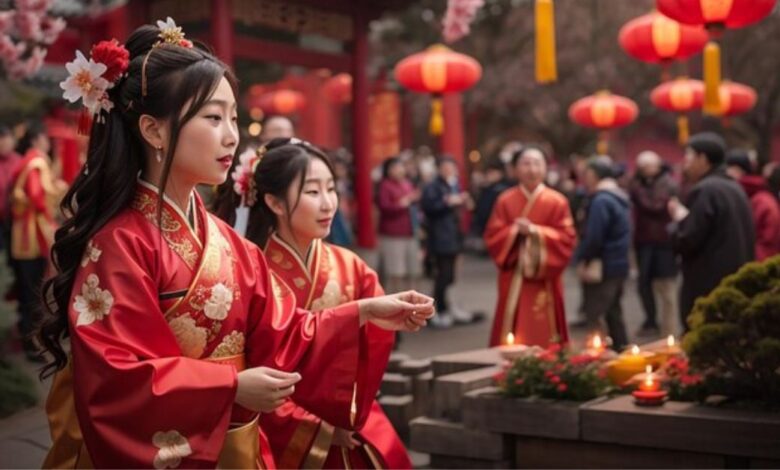Yahatai Kodosai: A Celebration of Tradition and Culture

Yahatai Kodosai is a traditional Japanese festival deeply rooted in the cultural heritage of Japan. This festival, typically held in the fall, is a vibrant blend of history, spirituality, and community. It showcases the harmony between nature, people, and the divine, making it an event cherished by both locals and visitors. Yahatai Kodosai is not just a celebration but a way to preserve ancient traditions, fostering a strong sense of unity and cultural pride.
Origins of Yahatai Kodosai
The origins of Yahatai Kodosai date back centuries, deeply intertwined with Shinto beliefs and practices. The festival was established as a way to honor the gods and ensure a bountiful harvest for the community. Over the years, it has evolved, incorporating various elements that reflect both the old and new aspects of Japanese culture. The term “Yahatai” refers to the use of portable shrines or floats carried during the festival, while “Kodosai” signifies a spiritual gathering, making the event a fusion of the sacred and the celebratory.
The Role of Shintoism in Yahatai Kodosai
Shintoism, the indigenous religion of Japan, plays a central role in the Yahatai Kodosai festival. The festival is a spiritual event where people express gratitude to the gods for their blessings, particularly for a successful harvest season. Various rituals are performed to invoke the gods’ protection and ensure prosperity for the community in the coming year. These ceremonies are often held at local shrines, where priests offer prayers and make offerings to the deities.
Significance of the Yahatai (Portable Shrines)
One of the most distinctive features of Yahatai Kodosai is the use of portable shrines, or “yahatai.” These ornately decorated floats are carried through the streets by groups of people, representing different neighborhoods or guilds. The act of carrying the yahatai is both a religious and communal activity, symbolizing the gods’ presence among the people. Each shrine is beautifully crafted, often adorned with intricate carvings, flowers, and banners, reflecting the artistic heritage of the region.
Community Involvement in Yahatai Kodosai
Yahatai Kodosai is not just a religious event but also a major community affair. The festival brings together people of all ages and backgrounds, fostering a strong sense of camaraderie and togetherness. Preparations for the festival begin months in advance, with local artisans, families, and organizations collaborating to ensure the success of the event. The festival serves as an opportunity for the community to come together, strengthening bonds and celebrating their shared cultural identity.
Rituals and Ceremonies Performed
The festival is marked by various rituals and ceremonies that reflect the deep spiritual meaning of Yahatai Kodosai. These include purification rites, where participants cleanse themselves before carrying the yahatai, as well as offerings of food, sake, and other items to the gods. Dance performances, known as “kagura,” are also a common feature of the festival, with dancers dressed in traditional costumes performing to honor the deities.
The Procession: A Visual Spectacle
The procession of the yahatai through the streets is one of the most visually stunning aspects of the festival. The floats, carried by groups of people in coordinated movements, wind their way through the town, accompanied by the sounds of traditional music and chanting. Spectators line the streets, cheering on the participants and offering prayers as the shrines pass by. The procession is a dynamic display of devotion, energy, and creativity, leaving a lasting impression on everyone involved.
Traditional Music and Dance at the Festival
Music and dance are integral parts of Yahatai Kodosai, adding to the festive atmosphere. Traditional Japanese instruments, such as taiko drums, flutes, and bells, create a rhythmic backdrop to the event. Performers, often dressed in elaborate costumes, engage in dances that have been passed down through generations. These performances are not only entertaining but also serve as a way to connect with the spiritual essence of the festival, invoking blessings from the gods.
The Role of Youth in the Festival
Young people play a crucial role in the success of Yahatai Kodosai. From helping with the preparation of the yahatai to participating in the procession and performances, youth involvement is seen as a way to pass on cultural traditions to the next generation. Many families view participation in the festival as a rite of passage for their children, instilling in them a sense of pride in their heritage and a commitment to preserving these customs.
Cultural Significance Beyond Religion
While Yahatai Kodosai is deeply rooted in religious traditions, its cultural significance extends beyond spirituality. The festival is a showcase of Japanese craftsmanship, performing arts, and community spirit. It serves as a platform for local artisans to display their skills in creating the elaborate yahatai, as well as for performers to demonstrate traditional dance and music. The festival thus plays a vital role in preserving and promoting Japanese cultural heritage.
Economic Impact of Yahatai Kodosai
In addition to its cultural and spiritual importance, Yahatai Kodosai has a significant economic impact on the local community. The festival attracts visitors from across the country and abroad, boosting tourism and providing a vital source of income for local businesses. Hotels, restaurants, and shops see increased activity during the festival, contributing to the economic vitality of the region. The event also offers opportunities for local artisans and craftsmen to sell their goods, further supporting the local economy.
Modern Influences on the Festival
Like many traditional festivals, Yahatai Kodosai has been influenced by modern trends and changes in society. While the core rituals and customs remain intact, the festival has adapted to the contemporary world in various ways. For instance, social media has played a role in promoting the festival, attracting younger generations and international visitors. Additionally, modern technology has been incorporated into the construction of the yahatai, allowing for more intricate designs and lighting effects.
Challenges in Preserving Tradition
Despite its popularity, Yahatai Kodosai faces challenges in preserving its traditional aspects. As Japan’s population ages and rural communities shrink, there are concerns about whether younger generations will continue to uphold the customs associated with the festival. Efforts are being made to address these challenges, such as encouraging youth participation and providing support for the artisans and performers who keep the traditions alive.
The Future of Yahatai Kodosai
Looking ahead, the future of Yahatai Kodosai will depend on the continued commitment of the community to preserve its cultural and spiritual heritage. As the festival evolves, it will need to strike a balance between maintaining its ancient traditions and embracing modern influences. With the support of local and national organizations, there is hope that Yahatai Kodosai will continue to thrive for generations to come.
Conclusion
Yahatai Kodosai is more than just a festival—it is a celebration of Japan’s rich cultural heritage, spiritual beliefs, and community spirit. Through its vibrant processions, rituals, music, and dance, the festival offers a unique window into the heart of Japanese traditions. As it faces the challenges of modernization and demographic changes, the festival remains a vital part of the cultural landscape, reminding us of the importance of preserving our heritage for future generations.
Read More : Sino-west.org
FAQs
What is the origin of Yahatai Kodosai?
Yahatai Kodosai originated as a Shinto festival to honor the gods and ensure a successful harvest. Its history spans several centuries.
What are the portable shrines used in the festival?
The portable shrines, or yahatai, are ornately decorated floats carried through the streets, symbolizing the gods’ presence among the people.
How does the community prepare for the festival?
Preparations for Yahatai Kodosai begin months in advance, with local artisans, families, and organizations working together to plan the event.
What role do young people play in the festival?
Young people participate in various activities, from preparing the yahatai to performing traditional music and dance, ensuring the preservation of cultural traditions.
How does the festival impact the local economy?
Yahatai Kodosai boosts tourism and supports local businesses, providing an economic lift to the region during the festival.



